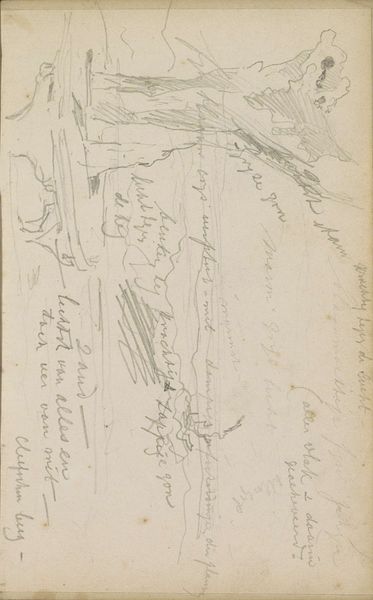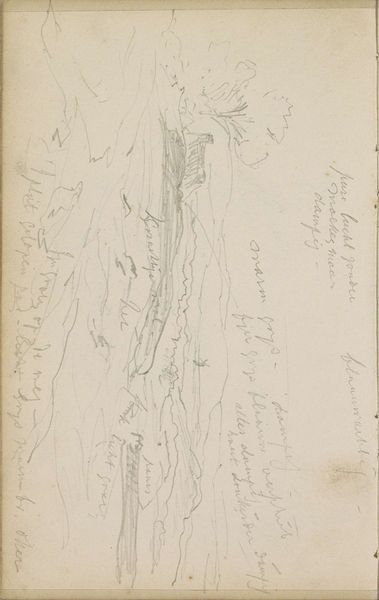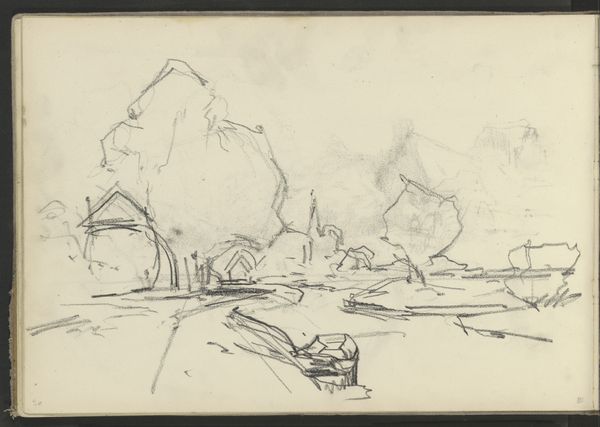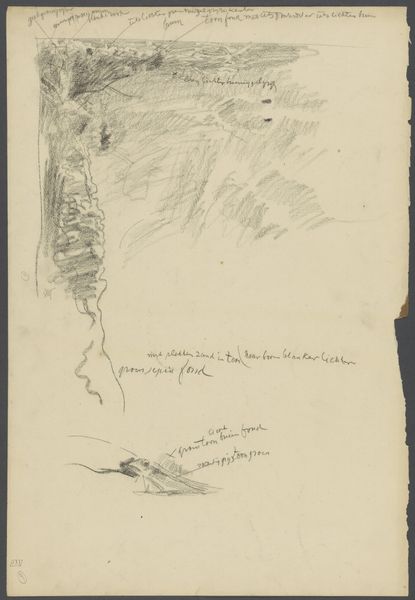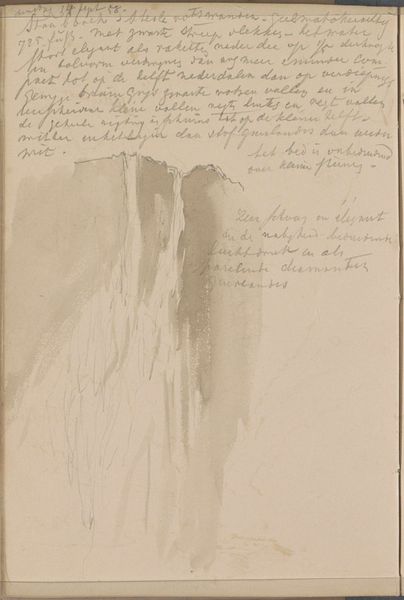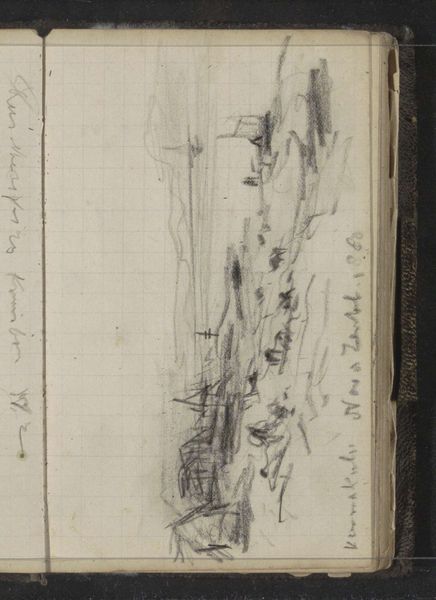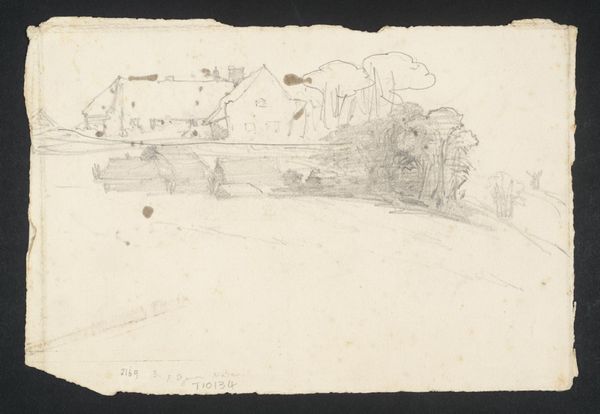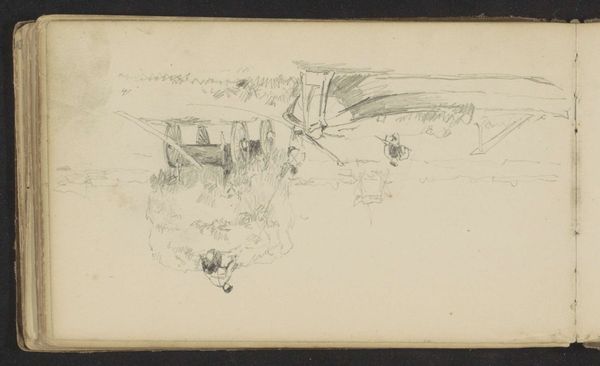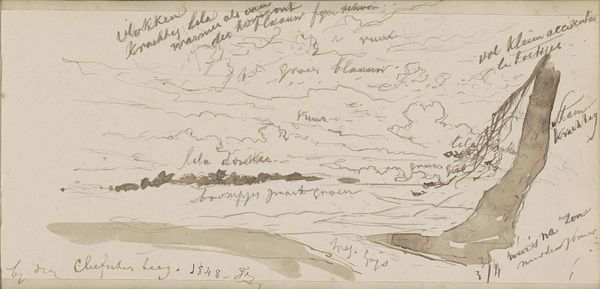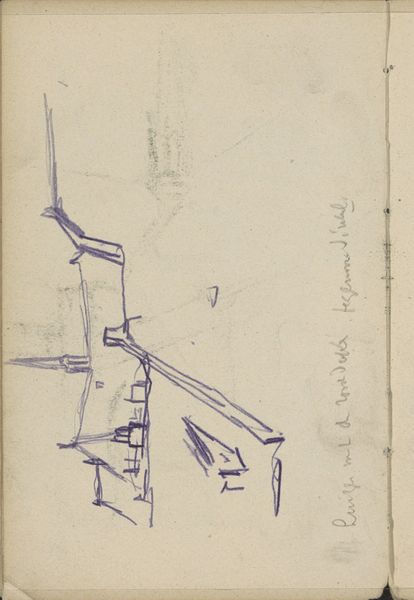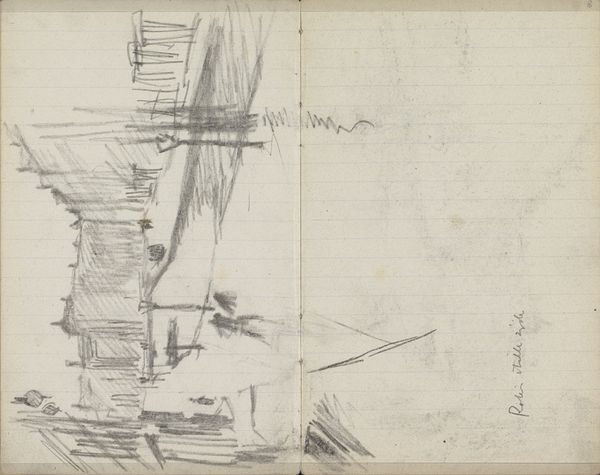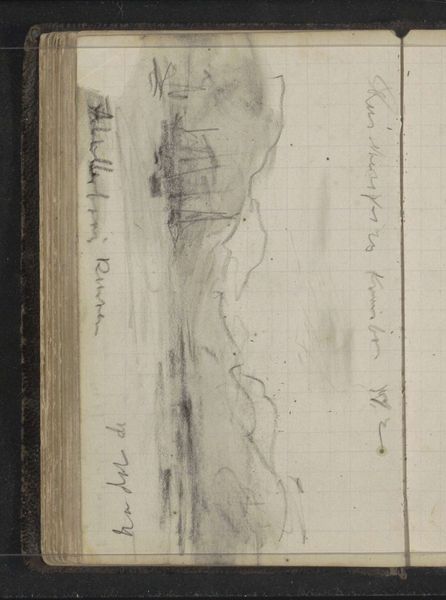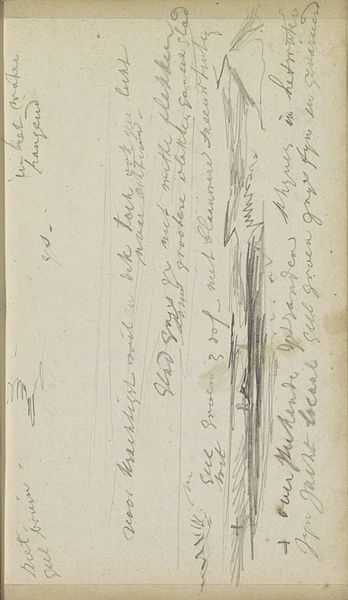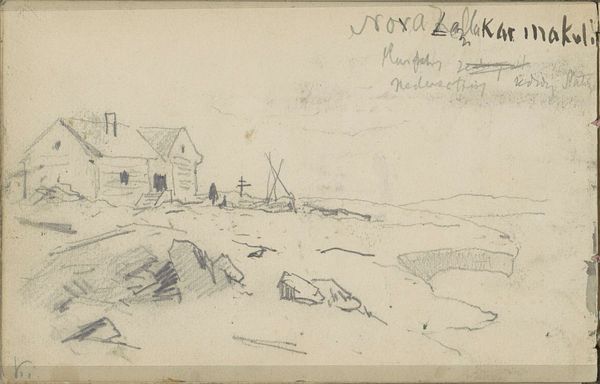
Copyright: Rijks Museum: Open Domain
Curator: This pen and ink sketch, "Brief aan Lodewijk Mulder," made by Johannes Bosboom between 1827 and 1891, is captivating in its simplicity. The texture created by the ink wash is quite striking. What do you make of it? Editor: I'm drawn to the grid of the paper showing through the washes and lines. It feels almost like the sketch is layered on top of a pre-existing structure. How does Bosboom's use of readily available materials inform our understanding of the work? Curator: Precisely! The grid reveals the humble origins of this piece. Bosboom wasn't creating "high art" in the traditional sense. He’s using everyday materials, paper, and ink, tools for writing and accounting, for artistic exploration. Consider the social context: this era saw increased access to paper. This shift democratized art-making. Editor: So, the value isn't necessarily in the preciousness of the materials, but in the act of creation and accessibility? Curator: Absolutely. Think about the labor involved. Bosboom wasn't commissioning expensive canvases; he was utilizing what was at hand. The “brief” element, combined with the visual landscape, speaks volumes about his creative process as intertwined with the mundane act of communication. It challenges the separation of art from the everyday. Where do you see signs of that "everyday" in the landscape portrayed? Editor: I see it in the almost hurried lines. It’s less about perfect representation and more about capturing a fleeting moment. Like a visual note. Curator: Exactly. Bosboom uses material immediacy to blur the lines between a quick sketch, a letter, and a finished artwork. We are forced to acknowledge how materials impact meaning. It pushes us to re-evaluate what constitutes "art." Editor: I never considered that the material itself could be a statement. This perspective changes how I’ll approach art in the future. Curator: And that expanded consideration can open up entirely new avenues for art creation and interpretation.
Comments
No comments
Be the first to comment and join the conversation on the ultimate creative platform.
